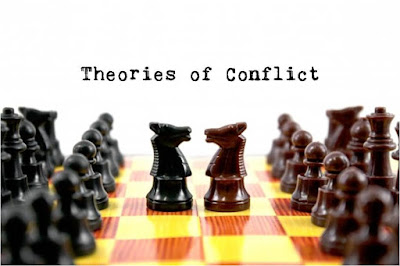From the last 2 decades, there has been a tremendous growth towards approach on the study of conflict and conflict management.The exact boundary of this emerging field is difficult to ascertain reason being many scholars and writers have been distinguishing between sub-categories of this field. They are operating in different domains such as court and legal system, public policy, labor-management relations, inter-ethnic relations and international diplomacy and have deduced their ideas from the variety of sources such as law, psychology, management theories, group dynamics, peace research, decision theory, and sociology.
In spite of different level, domain and intellectual origin that qualifies the work in this field, there are certain common threads/points-such as law, psychology, management theories, group dynamics, peace research, decision theory, and sociology. Now in the upcoming text, we will try to make an attempt to ascertain different development in the theoretical aspect of the conflict.
- Two or more parties are involved.
- They engage in mutually opposite actions.
- They use coercive behaviors designed to destroy, injure or otherwise control their opponents.
- These interactions are overt and can be detected and agreed upon by independent observers.
Later in 1956, Lewis Coser (2) became the first sociologist to try to bring together structural functionalism and conflict theory. He also pinpointed that conflict might serve to solidify a loosely structured group. In a society that seems to be disintegrating, conflict with another society, inter-group conflict, may restore the integrative core. For example, the cohesiveness of Israeli Jews might be attributed to the long-standing conflict with the Arabs. Conflict with one group may also serve to produce cohesion by leading to a series of alliances with other groups.
Conflicts within a society, intra-group conflict, can bring some ordinarily isolated individuals into an active role. The protest over the Vietnam War motivated many young people to take vigorous roles in American political life for the first time.
In 1959 Ralf Dahrendorf (3) suggested that conflict is present and will arise when the people have different access and authority of power. He forwarded his work in Class and Class Conflict in Industrial Society (often regarded as the most influential account of the problem of social inequality).
In 1971 Adam Curle (4) gave conflict a wider meaning by stating that conflict is present in any situation in which individuals are unable to realize their full potential and helped in providing the framework for peace via his diagram of Progression of Conflict(5) in 4 steps:
- Education
- Confrontation
- Negotiation (with help of Mediation?)
- Sustainable Peace
 |
| Progression of Conflict (6) |
From the perspective of conflict management some, major thinkers who have studied conflict from various angles are:
i) Jacob Bercovitch - his conception deals with narrow wider and subjective-objective approaches to conflict.
ii) Peter Wallensteen - who has adopted an approach which tries to integrate conflict theory and conflict management into a composite structure.
iii) Schellenberg - has given the ' Perspective Theory ' of conflict in which he gives three historical perspectives comprising the works of Charles Darwin, Adam Smith and Karl Marx.
iv) Miscellaneous approach-attempts to explain the works of important researchers like Anatol Rapoport and Michael Intriligater who use formal reasoning and borrow their concepts from mathematics e.g., differential equations, game theory, action-reaction models etc. They have applied these models to study arms race, war initiation as well as termination and military strategy etc.
v) The last approach to be studied would be the Gandhian school of thought which emphasizes the ethical dimension and the moral principles in applying the nonviolent methods to study, manage and resolve the conflicts.The works of scholars like Margaret Fisher, H.J.N.Horseburgh, and S.C.Gangal who belong to this tradition will be examined in brief.(7)


.jpg)

No comments:
Post a Comment